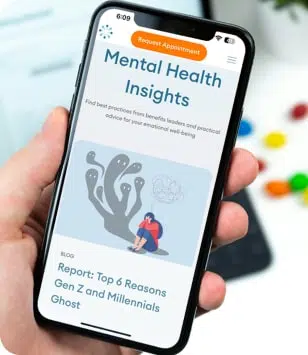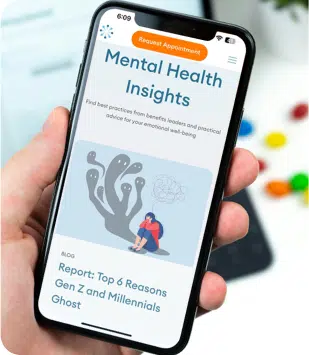Therapy Going Digital

While so much focus has been put on our physical health lately, it’s even more critical we don’t put our mental health on the backburner. The current limitations of social isolating are not ideal for many therapy seekers, however, it should not be an excuse to push mental health to the side. Below is a list of ways people can still utilize therapy from the home and the benefits of each.
Text Therapy: Text Therapy is a form of teletherapy that allows you to talk to your therapist over computer instant messenger or text from a phone.
Pros:
- Do it From Anywhere: Many people are in environments where it is not possible to speak privately for 45 minutes. Text Therapy allows people to speak with their therapist from any room without anyone noticing.
- Take Time to Process Responses: Texting helps some people think carefully before speaking which may help them articulate certain thoughts and emotions.
- Look Back at Your Session: Ever wish you took notes during a session or forgot what a therapist said? With Texting, you can always access your sessions and re-read anything that was mentioned.
Phone Therapy: Phone Therapy is a form of teletherapy that involves speaking over a cell phone or computer with audio-only.
Pros:
- Take a Walk: Therapy over the phone allows you to put some headphones in and go on a stroll. This may be practical if you don’t have any privacy inside your home.
- Tone of Voice: Even though you may not be able to see your therapist, you’ll likely get a good feel for them in a conversation, opposed to texting, since you can hear their voice.
Video Therapy: Video Therapy is a form of teletherapy that allows clients to see and speak to their therapist over video chat using a computer or smartphone.
Pros:
- Nonverbal Cues: Unlike other forms of teletherapy, video therapy allows clients to see certain nonverbal cues, such as body language, that may be important during a conversation.
- Screen Sharing: Many video platforms allow for the client or therapist to share their screen during therapy which can be very helpful when going over exercises clients may have practiced in the home.
For more information on how to gain access to mental health resources and therapy, call Thriving Mind Psychology’s office at 212-547-8861or email us at [email protected].

How to Overcome Procrastination and Anxiety
Procrastination is a very typical human experience. At some point or another, we’re all guilty of putting off that task we know is important. Maybe it’s household chores, filling your taxes, paying bills, or some other mind-numbingly boring task.

How to Build a Consistent Routine That Combats Depression
Depression can feel like a pit you can’t escape from, but know that depression is treatable with the right help. A basic daily ritual encourages healthy habits like a regular sleep schedule, healthy food choices, and exercise that support mental health.

How to Manage Stressful Life Transitions and Events
From getting into college or having a baby to splitting from a spouse or experiencing the death of a loved one, life can surprise you with big wins and tear you down with loss. Life is filled with transitions, some happy, others stressful and difficult.

How Long Does it Take to Recover from Burnout?
If you’ve reached burnout, it describes a state of complete emotional, physical, and mental exhaustion. Between heavy workloads, toxic work environments, economic uncertainty, and a poor work-life balance, burnout is a very real problem that can affect all aspects of your health.




